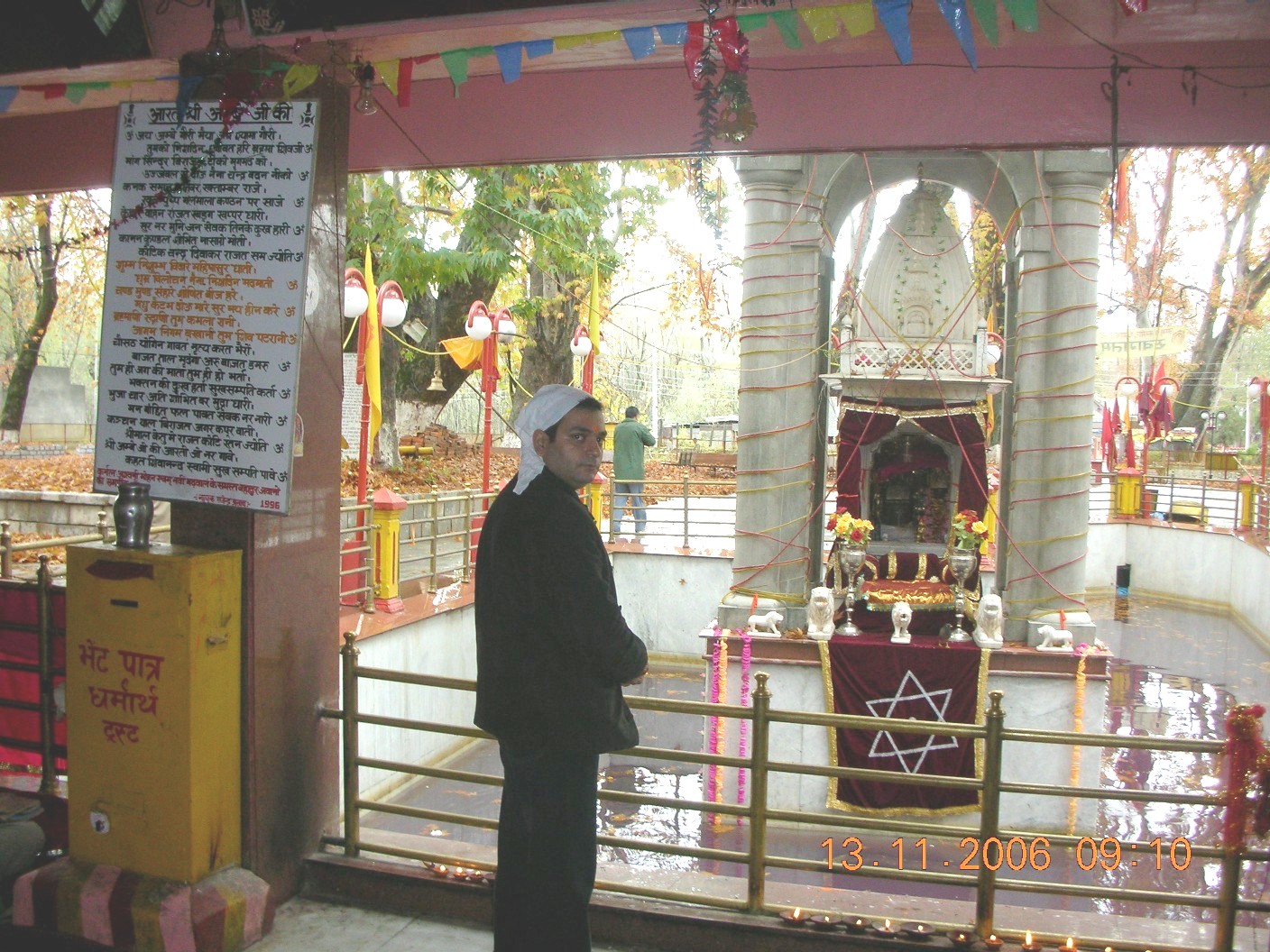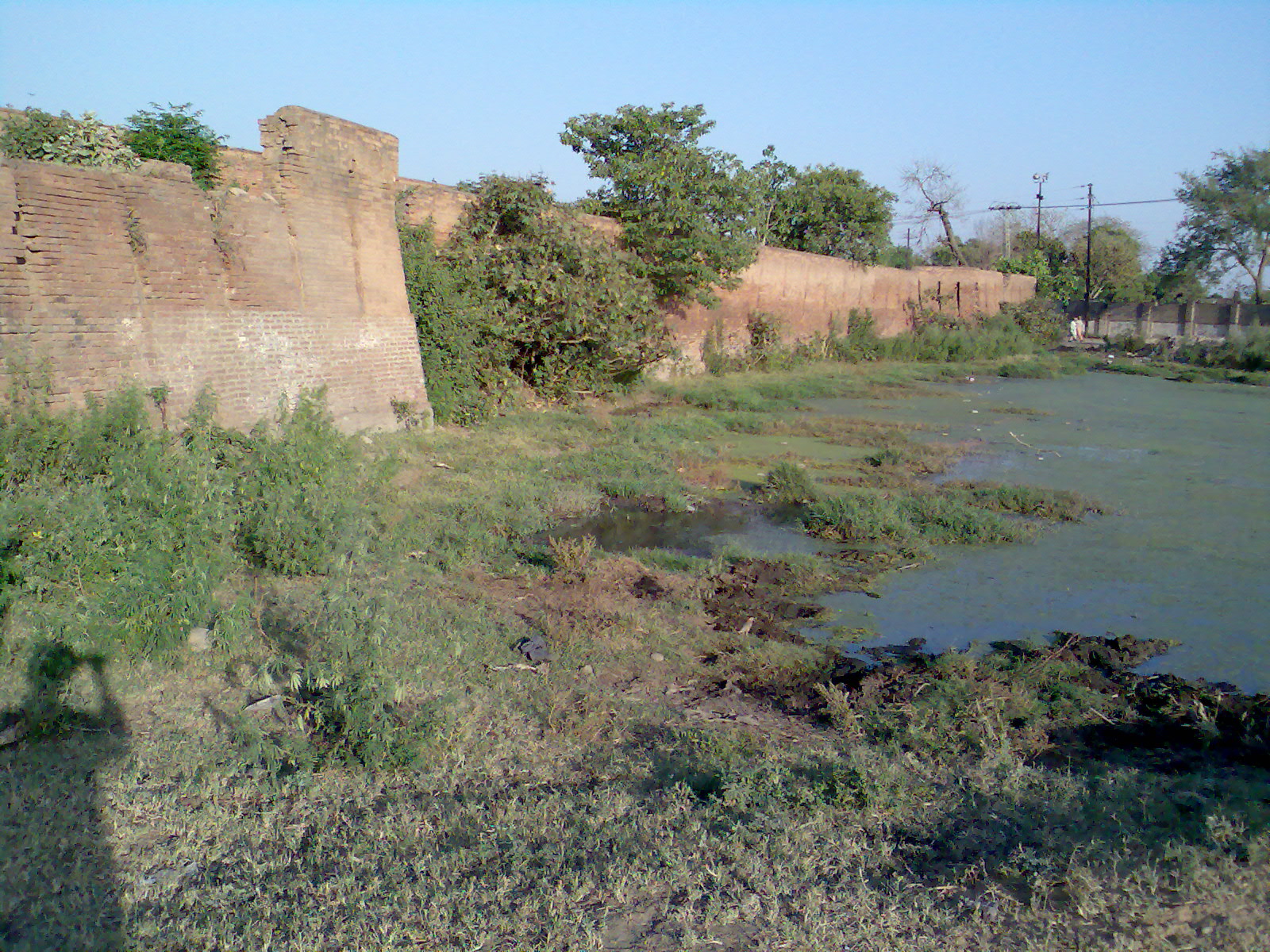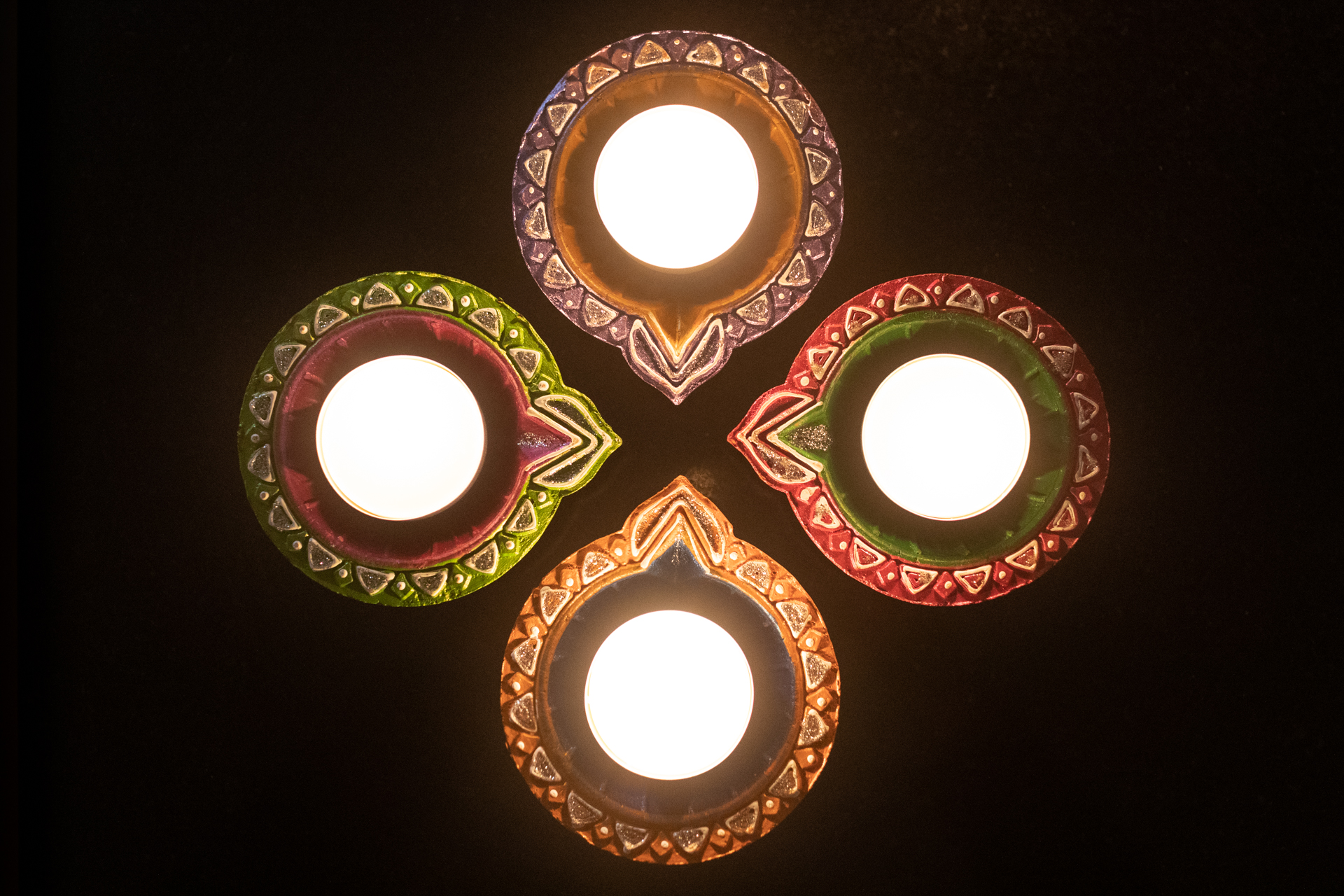|
Kashmiri Pandit Festivals
The religious festivals of the Kashmiri Pandits have Rigvedic roots. Some festivals of Kashmiri Pandits are unique to Kashmir. Some Kashmiri Pandit festivals are Herath (Shivaratri), Navreh, Zyeath-Atham (Jyeshtha Ashtami), Huri-Atham (Har Ashtami), Zarmae-Satam (Janmashtami), Dussehra, Diwali, Pan (Roth Puza / Vinayaka Tsoram / Ganesha Chaturthi), Gaad Batt, Khetsimavas (Yakshamavasya), Kava Punim, Mitra Punim, Tiky Tsoram, Gengah Atham, Tila Atham, Vyetha Truvah, and Anta Tsodah. Herath (Shivaratri) An interesting fact about Kashmiri Pandit festivals, needing investigation, is that some of these are celebrated a day ahead of their celebration by Hindus in other parts of the country. Shivaratri, regarded as the most important festival of the community, for instance, is celebrated by them on trayodashi or the thirteenth of the dark half of the month of Phalguna (February–March) and not on chaturdashi or the fourteenth as in the rest of the country. The reason for it is that th ... [...More Info...] [...Related Items...] OR: [Wikipedia] [Google] [Baidu] |
Kashmiri Pandits
The Kashmiri Pandits (also known as Kashmiri Brahmins) are a group of Kashmiri Hindus and a part of the larger Saraswat Brahmin community of India. They belong to the Pancha-Gauda, Pancha Gauda Brahmin group from the Kashmir Valley, a mountainous region located within the Indian union territory of Jammu and Kashmir (union territory), Jammu and Kashmir. Kashmiri Pandits are Hindu Kashmiris native to the Kashmir Valley, and the only remaining Hindu Kashmiris after the large-scale of conversion of the Valley's population to Islam during the medieval times. Prompted by the growth of Insurgency in Jammu and Kashmir, Islamic militancy in the valley, large numbers left in the Exodus of Kashmiri Hindus, exodus of the 1990s. Even so, small numbers remain. History Early history The Hindu caste system of the Kashmir region was influenced by the influx of Buddhism from the time of Ashoka, Asoka, around the third century BCE, and a consequence of this was that the traditional lines of V ... [...More Info...] [...Related Items...] OR: [Wikipedia] [Google] [Baidu] |
Tulmul
Kheer Bhawani, Ksheer Bhawani or the Ragnya Devi temple is a Hindu temple situated at a distance of north-east of Srinagar, Jammu and Kashmir, India, in the village of Tulmul in Ganderbal. It is dedicated to the Hindu goddess Kheer Bhavani constructed over a sacred spring. As is the custom with Hindu deities, the goddess has many names including ''Ragyna'' or ''Rajna'', along with variations in honorifics such as devi, mata or bhagavati. The term ''kheer'' refers to a milk and rice pudding that is offered to propitiate the goddess. Kheer Bhawani is sometimes translated as 'Milk Goddess'. The worship of Kheer Bhawani is universal among the Hindus of Kashmir, most of them who worship her as their protective patron deity Kuladevi. The sacred spring here has its own attached belief. An eponymously named ''mela'' is held annually here. It is one of the largest gatherings of Hindus in the region following the Amarnath pilgrimage. Maharaja Pratap Singh of Jammu and Kashmir and ... [...More Info...] [...Related Items...] OR: [Wikipedia] [Google] [Baidu] |
Festivals In Jammu And Kashmir
A festival is an event ordinarily celebrated by a community and centering on some characteristic aspect or aspects of that community and its religion or cultures. It is often marked as a local or national holiday, mela, or eid. A festival constitutes typical cases of glocalization, as well as the high culture-low culture interrelationship. Next to religion and folklore, a significant origin is agricultural. Food is such a vital resource that many festivals are associated with harvest time. Religious commemoration and thanksgiving for good harvests are blended in events that take place in autumn, such as Halloween in the northern hemisphere and Easter in the southern. Festivals often serve to fulfill specific communal purposes, especially in regard to commemoration or thanking to the gods, goddesses or saints: they are called patronal festivals. They may also provide entertainment, which was particularly important to local communities before the advent of mass-produced ... [...More Info...] [...Related Items...] OR: [Wikipedia] [Google] [Baidu] |
List Of Hindu Festivals
Across the globe, Hindus celebrate a diverse number of festivals and celebrations, typically marking events from ancient India and often coinciding with seasonal changes. These celebrations take place either on a fixed annual date on the solar calendar, or on a specific day of the lunisolar calendar. There is some regional variation with the observance of the festivals, and numerous festivals that are primarily celebrated by specific sects or in certain regions of the Indian subcontinent. Terminology Utsava ''Utsava'' is the Sanskrit word for festivals. The Sanskrit word ''Utsava'' comes from the word "''ut''" meaning "removal" and "''sava''" which means "worldly sorrows" or "grief". Observance periods (''tithi'') Hindu calendar dates are usually prescribed according to a lunisolar calendar. In Vedic timekeeping, a ''māsa'' is a lunar month, a ''pakṣa'' is a lunar fortnight and a ''tithi'' is a lunar day. Two definitions of the lunar month prevail: amānta and pūrṇim ... [...More Info...] [...Related Items...] OR: [Wikipedia] [Google] [Baidu] |
Vedas
upright=1.2, The Vedas are ancient Sanskrit texts of Hinduism. Above: A page from the '' Atharvaveda''. The Vedas (, , ) are a large body of religious texts originating in ancient India. Composed in Vedic Sanskrit, the texts constitute the oldest layer of Sanskrit literature and the oldest scriptures of Hinduism. There are four Vedas: the Rigveda, the Yajurveda, the Samaveda and the Atharvaveda. Each Veda has four subdivisions – the Samhitas (mantras and benedictions), the Aranyakas (text on rituals, ceremonies, sacrifices and symbolic-sacrifices), the Brahmanas (commentaries on rituals, ceremonies and sacrifices), and the Upanishads (texts discussing meditation, philosophy and spiritual knowledge).Gavin Flood (1996), ''An Introduction to Hinduism'', Cambridge University Press, , pp. 35–39A Bhattacharya (2006), ''Hindu Dharma: Introduction to Scriptures and Theology'', , pp. 8–14; George M. Williams (2003), Handbook of Hindu Mythology, Oxford University Press, , p ... [...More Info...] [...Related Items...] OR: [Wikipedia] [Google] [Baidu] |
Jhelum
Jhelum ( Punjabi and ur, ) is a city on the east bank of the Jhelum River, which is located in the district of Jhelum in the north of Punjab province, Pakistan. It is the 44th largest city of Pakistan by population. Jhelum is known for providing many soldiers to the British Army before independence, and later to the Pakistan armed forces – due to which it is also known as ''City of Soldiers'' or ''Land of Martyrs and Warriors''. Jhelum is a few miles upstream from the site of the ancient Battle of the Hydaspes between the armies of Alexander and King Porus. Possibly Jhelum City was the capital of Porus' Kingdom, Paurava. A city called Bucephala was founded nearby to commemorate the death of Alexander's horse, Bucephalus. Other notable sites nearby include the 16th-century Rohtas Fort, the Tilla Jogian complex of ancient temples, and the 16th-century Grand Trunk Road which passes through the city. According to the 2017 census of Pakistan, the population of Jhelum was 19 ... [...More Info...] [...Related Items...] OR: [Wikipedia] [Google] [Baidu] |
Vitasta
The Jhelum River (/dʒʰeːləm/) is a river in the northern Indian subcontinent. It originates at Verinag and flows through the Indian administered territory of Jammu and Kashmir (union territory), Jammu and Kashmir, to the Pakistani-administered territory of Kashmir, and then into the Pakistani province of Punjab, Pakistan, Punjab. It is the westernmost of the Punjab#Political geography, five rivers of the Punjab, Punjab region, and flows through the Kashmir Valley. It is a tributary of the Chenab River and has a total length of about . Etymology Anjum Sultan Shahbaz, a Pakistanis, Pakistani author, recorded some stories of the name Jhelum in his book ''Tareekh-e-Jhelum'' as:''Many writers have different opinions about the name of Jhelum. One suggestion is that in ancient days Jhelumabad was known as Jalham. The word Jhelum is reportedly derived from the words Jal (pure water) and Ham (snow). The name thus refers to the waters of a river (flowing beside the city) which hav ... [...More Info...] [...Related Items...] OR: [Wikipedia] [Google] [Baidu] |
Diya (light)
A diya, diyo, deya, deeya, dia, divaa, deepa, deepam, deep , deepak or saaki is an oil lamp made from clay or mud with a cotton wick dipped in Oil or ghee. These lamps are commonly used in the Indian subcontinent and they hold sacred prominence in Hindu, Sikh, Buddhist and Jain prayers as well as religious rituals, ceremonies and festivals including Diwali. Traditional use Clay diyas are symbolically lit during prayers, rituals and ceremonies; they are permanent fixtures in homes and temples. The warm, bright glow emitted from a diya is considered auspicious - it represents enlightenment, prosperity, knowledge and wisdom. Diyas represent the triumph of light over dark, good over evil with the most notable example of this being on the day of Diwali. Diwali is celebrated every year to celebrate the triumph of good over evil as told in the Hindu epic, the Ramayana. Diwali marks the day Lord Shri Rama, Goddess Sita devi and Lakshmana returned home to Ayodhya after 14 years in ... [...More Info...] [...Related Items...] OR: [Wikipedia] [Google] [Baidu] |
Mitra
''Mitra'' ( Proto-Indo-Iranian: ''*mitrás'') is the name of an Indo-Iranian divinity from which the names and some characteristics of Rigvedic Mitrá and Avestan Mithra derive. The names (and occasionally also some characteristics) of these two older figures were subsequently also adopted for other figures: * A vrddhi-derived form of Sanskrit ''mitra'' gives Maitreya, the name of a bodhisattva in Buddhist tradition. * In Hellenistic-era Asia Minor, Avestan Mithra was conflated with various local and Greek figures leading to several different variants of Apollo-Helios-Mithras-Hermes- Stilbon. * Via Greek and some Anatolian intermediate, the Avestan theonym also gave rise to Latin ''Mithras'', the principal figure of the first century Roman Mysteries of Mithras (also known as 'Mithraism'). * In Middle Iranian, the Avestan theonym evolved (among other Middle Iranian forms) into Sogdian ''Miši'', Middle Persian and Parthian ''Mihr'', and Bactrian Miuro (/mihru/). Aside from ... [...More Info...] [...Related Items...] OR: [Wikipedia] [Google] [Baidu] |
Hindu
Hindus (; ) are people who religiously adhere to Hinduism.Jeffery D. Long (2007), A Vision for Hinduism, IB Tauris, , pages 35–37 Historically, the term has also been used as a geographical, cultural, and later religious identifier for people living in the Indian subcontinent. The term ''"Hindu"'' traces back to Old Persian which derived these names from the Sanskrit name ''Sindhu'' (सिन्धु ), referring to the river Indus. The Greek cognates of the same terms are "''Indus''" (for the river) and "''India''" (for the land of the river). The term "''Hindu''" also implied a geographic, ethnic or cultural identifier for people living in the Indian subcontinent around or beyond the Sindhu (Indus) River. By the 16th century CE, the term began to refer to residents of the subcontinent who were not Turkic or Muslims. Hindoo is an archaic spelling variant, whose use today is considered derogatory. The historical development of Hindu self-identity within the local In ... [...More Info...] [...Related Items...] OR: [Wikipedia] [Google] [Baidu] |
Hanuman
Hanuman (; sa, हनुमान, ), also called Anjaneya (), is a Hindu god and a divine '' vanara'' companion of the god Rama. Hanuman is one of the central characters of the Hindu epic ''Ramayana''. He is an ardent devotee of Rama and one of the Chiranjivis. Hanuman is regarded to be the son of the wind-god Vayu, who in several stories played a direct role in Hanuman's birth, and considered to be an incarnation or son of Shiva in Shaivism. Hanuman is mentioned in several other texts, such as the epic ''Mahabharata'' and the various Puranas. Evidence of devotional worship to Hanuman is largely absent in these texts, as well as in most archeological sites. According to Philip Lutgendorf, an American Indologist, the theological significance of Hanuman and devotional dedication to him emerged about 1,000 years after the composition of the ''Ramayana'', in the 2nd millennium CE, after the arrival of Islamic rule in the Indian subcontinent.Paula Richman (2010), ''Review: Lut ... [...More Info...] [...Related Items...] OR: [Wikipedia] [Google] [Baidu] |
Kheer Bhawani
Kheer Bhawani, Ksheer Bhawani or the Ragnya Devi temple is a Hindu temple situated at a distance of north-east of Srinagar, Jammu and Kashmir, India, in the village of Tulmul in Ganderbal. It is dedicated to the Hindu goddess Kheer Bhavani constructed over a sacred spring. As is the custom with Hindu deities, the goddess has many names including ''Ragyna'' or ''Rajna'', along with variations in honorifics such as devi, mata or bhagavati. The term ''kheer'' refers to a milk and rice pudding that is offered to propitiate the goddess. Kheer Bhawani is sometimes translated as 'Milk Goddess'. The worship of Kheer Bhawani is universal among the Hindus of Kashmir, most of them who worship her as their protective patron deity Kuladevi. The sacred spring here has its own attached belief. An eponymously named ''mela'' is held annually here. It is one of the largest gatherings of Hindus in the region following the Amarnath pilgrimage. Maharaja Pratap Singh of Jammu and Kashmir and ... [...More Info...] [...Related Items...] OR: [Wikipedia] [Google] [Baidu] |








.jpg)
